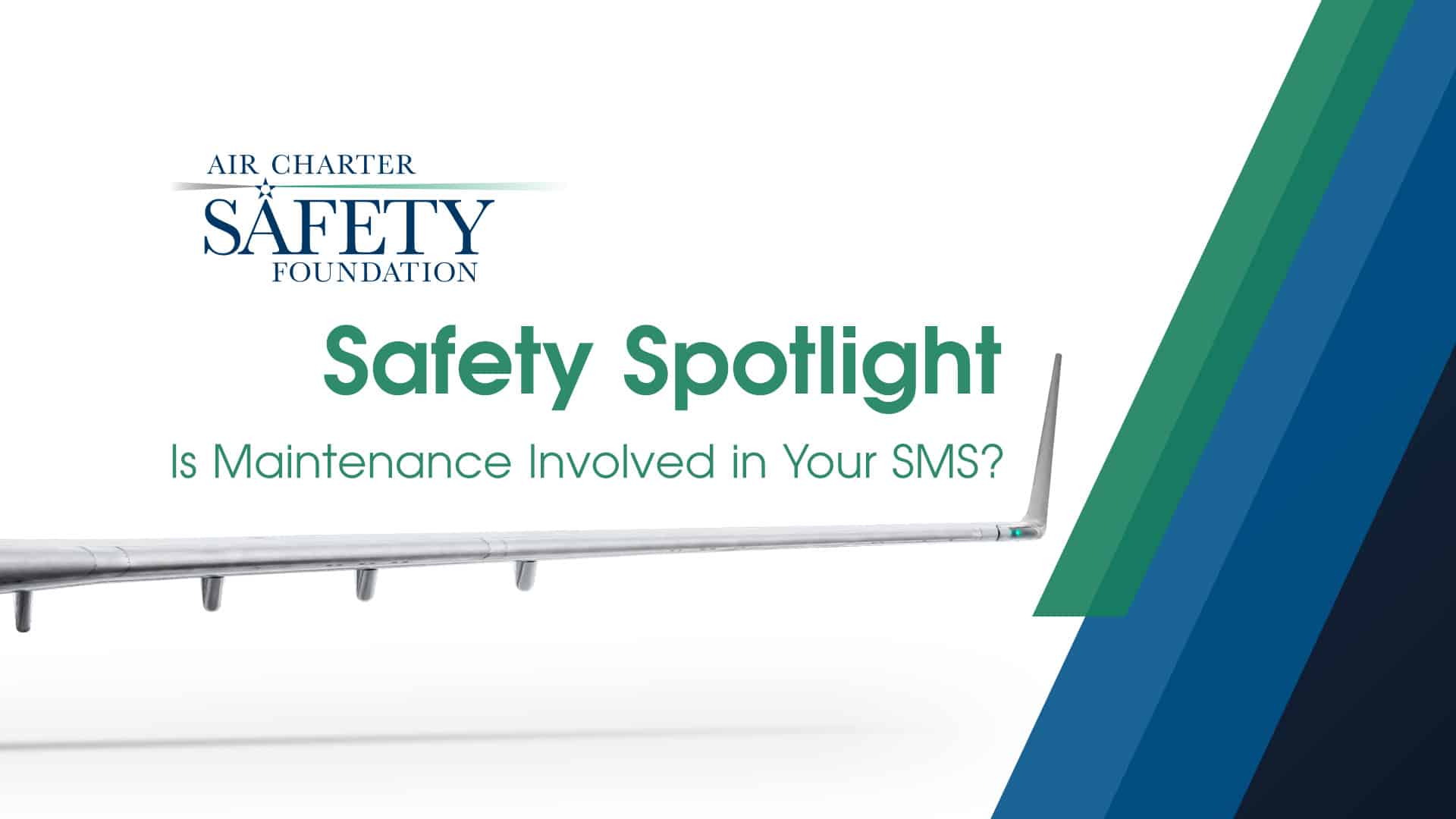As the aviation industry places an increasing emphasis on Safety Management Systems (SMS), one would hope that upper management recognizes the value of a robust SMS. While Safety Directors are leading efforts to embed SMS principles across departments, the maintenance team—often less enthusiastic than operations—plays a crucial role. It is these maintenance experts who ensure that aircraft remain safe and airworthy, serving as the true foundation of aviation safety.”
Addressing Misconceptions About SMS in Maintenance
Perhaps the best course of action for the Safety Director is to identify any misconceptions about SMS that may be influencing attitudes within the maintenance team. A common concern is, “SMS is just a duplication of effort, and we already record maintenance actions.” While this may be true it illustrates the difference between maintenance procedures and safety management. The former is certifying compliance with maintenance regulations and so on while the latter is concerned with risk management. Many technical faults on aircraft have safety implications, yet simply documenting the repair or replacement of a component does not assess the risk or document the controls implemented to mitigate that risk.

How SMS Enhances Fault Detection and Prevention in Maintenance
It is very rare for maintenance procedures to collect data on the occurrence of a particular fault. A well-designed SMS using FDM, on the other hand, collects data; documents mitigation controls, and also allows for analysis of data. Detecting trends enables you to become proactive in preventing recurring faults, and may reduce costs!
Let us examine a specific example. A recent case study of a maintenance oversight revealed that an operator had no procedures in place, either in the maintenance protocols or as part of the SMS, for dealing with outsourced work. A third-party maintenance organization had inadvertently left tape over a static port on completion of repair of a mode C fault. Had the director of maintenance and the director of safety been working together closely during the creation of the SMS it is probable that policies in both maintenance and safety would have been put in place to prevent this kind of incident.
How Transparency in SMS Reinforces Safety Culture and Accountability
Another benefit is simply one of confidence. One of the virtues of SMS is feedback to those who submit reports. If someone reports a safety concern which is put right through maintenance action they and all employees must be given access to documentation that shows what was done and why it was done. There is little more damaging to a good safety culture than a widespread belief that nothing ever gets done however erroneous that belief might be.
Integrating Safety and Just Culture Across The Organization
When examining the third pillar of SMS—safety assurance—it becomes clear that if maintenance issues are not reported within the safety system, there is no proof or assurance that the safety concern involving maintenance was addressed. One of the most self-defeating comments ever written on a safety report submitted by an operator (flight nurse), said, “This is not a safety issue, this is a maintenance issue.” The manager who wrote that comment also closed the report with no documentation of any remedial action or indeed any analysis of the risk whatsoever.
One of the many duties of a Safety Director is to encourage all employees within the organization to make full use of the open and non-punitive reporting system (Just Culture). An overused catchphrase often seemed is, “Safety Is Everyone’s Business”. That may be a cliché but it is true. Therefore, it is not just the job of a safety officer to encourage good reporting but it is also the job of everybody in the organization who contributes to the SMS to encourage good reporting by being fully involved in risk management, hazard analysis, safety assurance, and safety promotion.
The Accountable Executive’s Role in SMS
One of the most obvious symptoms of a good safety culture in any organization is the attitude of the accountable executive. By definition within the SMS, the accountable executive holds ultimate responsibility for accepting residual risk but may delegate this authority depending on the organization’s size and structure. Regardless of delegation, the AE is fully committed to overseeing and supporting all aspects of the SMS to ensure its effectiveness. This therefore includes maintenance, and to give him the information he needs full and complete documentation of all safety/maintenance issues is as important as operational safety issues.
Evaluating SMS Engagement in Your Maintenance Department
Here are some questions you can ask yourself which will help determine the level of support for SMS in your maintenance department:
- Is there a mechanic on your safety committee?
- Does your director of maintenance contribute fully to your safety reporting system?
- Are safety concerns, which involve maintenance, adequately resolved and documented?
- Does your maintenance department provide information as part of safety promotion about the aircraft such as modifications, airworthiness directives, or service bulletins?
- Do your crews have doubts about the quality of maintenance being provided?
- Anyone involved with providing services maintaining aircraft must know and understand their company’s safety program.
Let us not forget the great work The Air Charter Safety Foundation has made available in this area. They have excellent programs to assist operators in both the fixed-wing and rotary wing venues. These include the Member Assistance Program, The Aviation Safety Action Program, Auditing Programs, and assistance with implementing a Flight Data Monitoring Program. The intent of these programs is to assess their existing operations and maintenance activities. Thus, operators large and small can obtain these tools from these organizations and start an SMS program in which maintenance is a vital part of.
Building a Team Fully Committed to Safety
While many of the issues addressed above may be obvious to some, it is hoped that by thinking about these things we can help those responsible for safety (everyone) to build a complete team who are fully committed to safety. In short we need to know that those who fix them are looking after those that fly them. Implementing a Safety Management System into an organization large or small, will help save lives and resources. It will also help maintenance personnel, young and old, develop Risk Management skills which are in great demand in the aviation industry. Remember Safety Management is a TEAM Effort. As always, Take Action to Fly Safe!





